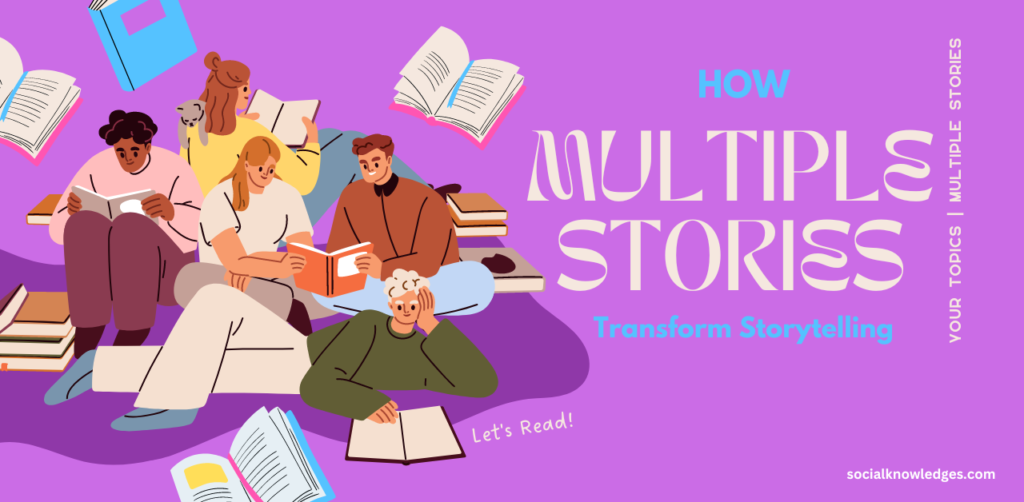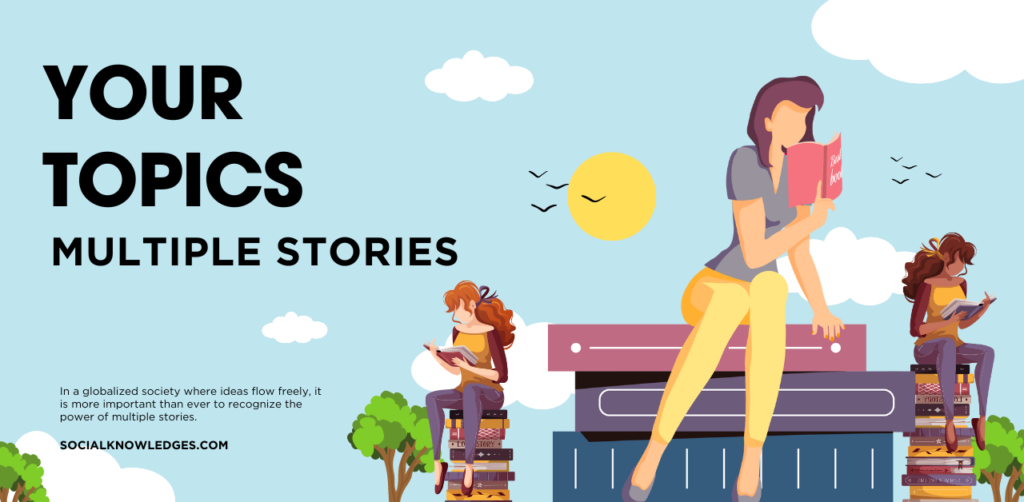Introduction
In a globalized society where ideas flow freely, it is more important than ever to recognize the power of Your topics | multiple stories. Each narrative carries its own weight, offering unique perspectives that contribute to a more complete understanding of complex issues. Multiple stories allow for diverse voices to be heard, ensuring that no one perspective dominates the conversation. This article delves into the significance of multiple narratives, especially in literature, media, and social movements, and how they help shape the way we think, learn, and grow.
How Multiple Stories Transform Storytelling

Traditionally, storytelling followed a linear, single-narrative structure. One perspective guided the audience through the plot, often leaving out the richness of multiple voices. However, the evolution of storytelling has embraced multiple stories, allowing audiences to see the world from various viewpoints.
Read More: Akad Shayari: Exploring the Art of Expressing Pride and Self-Respect in Poetry
The Evolution from Linear to Polyphonic Narratives

The shift from single-story structures to polyphonic narratives, where multiple voices and perspectives are included, has redefined storytelling. This structure offers a multidimensional look at characters, events, and experiences.
- Classic Linear Stories: These narratives followed one character or storyline, which limited the scope of the plot and its overall emotional depth.
- Polyphonic Narratives in Modern Literature: Books like The Sound and the Fury by William Faulkner and Cloud Atlas by David Mitchell have embraced multiple storytelling voices, enriching the reader’s experience by offering various perspectives that intersect and overlap.
The Role of Multiple Stories in Media

The media landscape has significantly benefited from the integration of multiple stories. From news outlets to film and television, the presentation of diverse perspectives has transformed how audiences consume and understand content.
Movies and TV Shows as Multi-Perspective Storytelling
In contemporary entertainment, multiple perspectives have taken center stage. Shows and movies featuring various character arcs, timelines, or storylines provide audiences with a deeper, more dynamic understanding of the plot.
- Movies with Multiple Stories: Films like Crash and The Hours use a multi-narrative format to intertwine different characters’ experiences, demonstrating how various lives can intersect in unexpected ways.
- TV Series Featuring Multiple Stories: Shows like Game of Thrones and Breaking Bad are beloved not just for their main plots but for their complex character subplots that allow the audience to view the world from many different angles.
How Multiple Stories Enhance Empathy and Understanding
At its core, the introduction of multiple stories in any form of media fosters empathy. By seeing the world through another’s eyes, whether in a novel, news report, or film, we develop a deeper emotional understanding and appreciation for different experiences.
Read More: Who is Chloe Troast | 10 Essential Well Health Tips in Hindi Wellhealthorganic
The Power of Diverse Narratives in Fostering Empathy
Exposure to diverse stories helps people become more empathetic toward individuals who come from different backgrounds or face unique challenges. This emotional connection strengthens our ability to understand perspectives that may differ significantly from our own.
- Books as Tools for Empathy: Literary works like The Kite Runner and Beloved provide readers with heart-wrenching and emotionally charged narratives, helping to humanize characters from different walks of life.
- Films That Build Understanding: Movies such as A Beautiful Mind or 12 Years a Slave shed light on personal struggles that audiences may never have encountered, broadening their emotional capacity for compassion.
Multiple Stories in Social Justice Movements
Social justice movements rely heavily on the amplification of multiple stories. Personal narratives play a pivotal role in illustrating systemic issues, exposing inequality, and calling for collective action.
Personal Stories as Catalysts for Change
Movements like #MeToo, #BlackLivesMatter, and LGBTQ+ rights have thrived due to the individual stories shared by those affected. These narratives bring attention to the injustices faced by marginalized communities, compelling others to join in solidarity.
- Intersectionality in Social Movements: The concept of intersectionality acknowledges that people experience oppression in varying degrees based on race, gender, sexuality, and other factors. Multiple stories within these movements ensure that a broad range of voices are heard, from all walks of life.
- Impact on Legislation and Policy: By highlighting real-life stories of injustice, movements can influence public opinion and policy, leading to tangible changes that benefit society as a whole.
The Role of Multiple Stories in Education
In the realm of education, multiple stories are essential for providing students with a well-rounded understanding of the world. By incorporating diverse perspectives, educators can challenge students to think critically and empathetically.
Teaching History Through Multiple Perspectives
Traditional history lessons often focus on dominant narratives, but by integrating multiple stories, students gain a more complete and accurate view of the past.
- The Importance of Inclusive Curricula: A well-rounded curriculum should include stories from various cultures, time periods, and social backgrounds, allowing students to see how different people have experienced historical events.
Conclusion: Why Multiple Stories Matter More Than Ever
As our world becomes increasingly interconnected, the importance of multiple stories will only grow. Whether through literature, media, education, or social movements, these diverse narratives have the power to shape our understanding of ourselves and others. By embracing multiple perspectives, we not only foster greater empathy but also create a more inclusive and equitable society. Stories shape our identities, our relationships, and our worldviews, and by acknowledging the power of multiple stories, we unlock a deeper understanding of the human experience.
FAQs on Multiple Stories and Their Impact
Q: Why are multiple stories important in storytelling?
A: Multiple stories allow for diverse perspectives, creating a richer and more nuanced narrative. This approach challenges single-story narratives and offers a broader understanding of the world.
Q: How do multiple stories influence empathy?
A: Exposure to different perspectives through multiple stories helps individuals develop a deeper sense of empathy, understanding the experiences and emotions of others more fully.
Q: Can multiple stories improve education?
A: Absolutely. In education, incorporating multiple stories broadens students’ horizons, helping them develop critical thinking skills and a more inclusive worldview.
Q: What role do multiple stories play in social movements?
A: Multiple stories give voice to those who have been marginalized, helping to raise awareness of social justice issues and promoting inclusivity in advocacy efforts.


